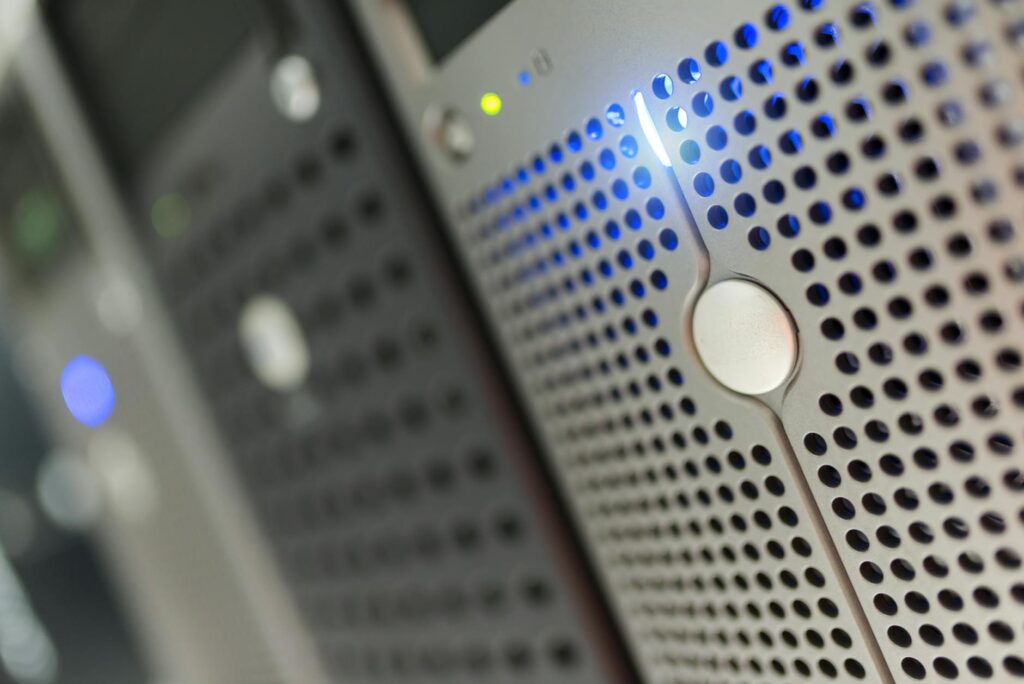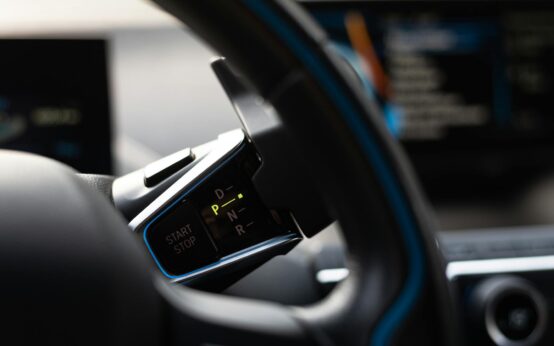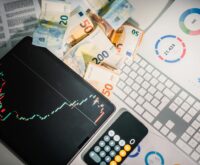The Unstoppable Partnership: How AI and Big Data Are Quietly Remaking Our World
Let’s be honest. You hear the terms ‘AI’ and ‘big data’ thrown around so much they’ve almost become background noise. They’re the buzzwords of the decade, slapped onto everything from toasters to corporate strategies. But here’s the thing: behind the hype, the combination of AI and big data isn’t just a trend. It’s a fundamental revolution, a power couple that’s quietly and profoundly changing just about everything. It’s the engine behind your Netflix recommendations, the intelligence that helps your doctor spot diseases earlier, and the force that could one day drive your car. This isn’t science fiction anymore. It’s the new reality, and understanding how these two forces work together is no longer optional—it’s essential.
Key Takeaways
The Perfect Pair: Big data is the fuel, and AI is the engine. AI needs massive datasets to learn and improve, while big data is useless without AI to analyze it and find meaningful patterns.
Industry Transformation: From personalized medicine in healthcare to fraud detection in finance and hyper-personalized marketing, this duo is creating unprecedented efficiency and innovation across all sectors.
Ethical Hurdles: With great power comes great responsibility. We must address critical challenges like data privacy, algorithmic bias, and the potential for job displacement to ensure this technology benefits everyone.
First, Let’s Untangle the Terms: What Are We Really Talking About?
Before we dive into their partnership, it’s crucial to understand the players individually. They’re often used interchangeably, but they are very different beasts.
Big Data: More Than Just a Lot of Data
Think about the sheer amount of information generated every single second. Every click, every swipe, every GPS ping, every transaction, every social media post. It’s a digital avalanche. That’s big data. But it’s not just about the size. The term is defined by the “Three Vs”:
- Volume: This is the most obvious one. We’re talking about petabytes and exabytes of data. Amounts so large that traditional databases and software just can’t handle them.
- Velocity: Data is flooding in at an incredible speed. Think about stock market data or the stream of tweets during a global event. It has to be processed in near real-time to be valuable.
- Variety: This is where it gets really interesting. Big data isn’t just neat rows and columns in a spreadsheet. It’s a messy, chaotic mix of everything: structured data (like sales figures), unstructured data (like emails, videos, and social media posts), and semi-structured data (like XML files).
So, big data is a massive, fast-moving, and wildly diverse collection of information. On its own, it’s like having the world’s largest library where all the books are thrown in a giant pile. You know the answers are in there somewhere, but finding them is impossible. You have the raw material, but no tools.
Artificial Intelligence (AI): The Brains of the Operation
If big data is the library, AI is the super-powered librarian who has read every book and can instantly connect concepts across millions of pages. AI refers to systems or machines that mimic human intelligence to perform tasks and can iteratively improve themselves based on the information they collect. It’s the “thinking” part of the equation.
Within the broad field of AI, you have a critical subfield: Machine Learning (ML). This is where the magic really happens. Instead of being explicitly programmed to do something, an ML algorithm is ‘trained’ on a huge dataset. It learns to recognize patterns, make predictions, and get smarter over time. The more data it sees, the better it gets. Think of it like teaching a child to recognize a cat. You don’t write a rulebook; you just show them thousands of pictures of cats until they figure it out on their own. That’s the essence of machine learning.

The Symbiotic Relationship: Why AI and Big Data Need Each Other
Now, let’s put them together. The relationship between AI and big data is completely symbiotic. One is basically useless without the other. They create a virtuous cycle of improvement.
- Big Data Feeds AI: As we just discussed, machine learning algorithms are hungry. They need vast amounts of data to learn effectively. A facial recognition AI is only as good as the millions of faces it’s been shown. A predictive text algorithm is only as good as the billions of sentences it has analyzed. Big data provides the endless buffet of information that AI needs to grow from a simple program into a sophisticated, intelligent system.
- AI Makes Sense of Big Data: That giant, chaotic pile of data? A human could spend a lifetime sifting through it and find nothing. An AI can analyze it in minutes. AI algorithms are designed to spot subtle patterns, correlations, and anomalies that are completely invisible to the human eye. It can parse unstructured text, understand images, and identify trends in real-time. It turns that chaotic library into an organized, searchable source of profound insight.
This cycle is continuous. As AI systems analyze big data, they often generate more data (logs, predictions, outcomes), which can then be fed back into the system to make it even smarter. It’s a self-improving loop that gets more powerful with every rotation. The result? We can now ask questions we never could before and get answers almost instantly. We can move from reactive decision-making (what happened?) to predictive and prescriptive analytics (what will happen, and what should we do about it?). It’s a total game-changer.
Real-World Magic: How AI and Big Data Are Changing Industries
This isn’t theoretical. This partnership is already at work, disrupting and optimizing virtually every sector of the economy. Let’s look at a few concrete examples.
Healthcare: From Diagnosis to Drug Discovery
Healthcare generates a staggering amount of data—patient records, clinical trial results, medical imaging, genetic sequences. By applying AI to this big data, we’re seeing incredible breakthroughs. AI models can analyze medical scans like X-rays and MRIs to detect signs of diseases like cancer with a speed and accuracy that can sometimes surpass human radiologists. In pharmaceuticals, AI can sift through massive datasets of molecular compounds to predict which ones are most likely to be effective drugs, dramatically shortening the years-long and billion-dollar process of drug discovery. It’s not about replacing doctors; it’s about giving them superpowers.
E-commerce: The Personal Shopper in Your Pocket
Ever wonder how Amazon knows exactly what you want to buy before you do? That’s AI and big data. Recommendation engines analyze your browsing history, past purchases, what other people like you bought, and even how long your mouse hovers over an item. They process this colossal stream of data to create a hyper-personalized shopping experience. This same tech powers dynamic pricing, inventory management, and even fraud detection, making online retail more efficient and profitable than ever before.
Finance: Fighting Fraud and Predicting Markets
The financial world runs on data. Trillions of dollars move around the globe every day, creating an enormous data trail. AI is indispensable here. Machine learning algorithms monitor millions of transactions in real-time to spot anomalies that could indicate fraudulent activity, saving banks and consumers billions. For traders, AI analyzes news sentiment, social media trends, and historical market data to make predictions about stock movements. It’s also the engine behind algorithmic trading, where machines execute trades at speeds no human could ever match.
Transportation: The Road to Autonomous Vehicles
A self-driving car is basically a sophisticated AI and big data machine on wheels. It’s equipped with sensors (cameras, lidar, radar) that generate a massive amount of data about its surroundings every millisecond. The car’s AI brain must process this data instantly to make critical decisions: identify pedestrians, read traffic signs, and predict the actions of other drivers. Furthermore, the data from an entire fleet of vehicles can be pooled and analyzed to improve the AI for every car on the road, a classic example of the virtuous cycle in action.

The Challenges and Ethical Tightropes We Can’t Ignore
It’s easy to get swept up in the excitement, but it would be irresponsible to ignore the very real challenges and ethical dilemmas this technology presents. The same power that can cure diseases can also be misused, and we have to tread carefully.
The Privacy Predicament
To work, AI needs data. A lot of it. Often, that’s our personal data. Where do we draw the line between useful personalization and intrusive surveillance? The debate around data privacy, consent, and ownership is one of the most pressing of our time. Regulations like GDPR are a start, but as technology evolves, so too must our rules for governing it. Ensuring data is anonymized and securely stored is a monumental technical and ethical challenge.
Bias In, Bias Out: The Algorithm’s Dilemma
An AI is only as good as the data it’s trained on. If that historical data reflects societal biases (and it almost always does), the AI will learn and even amplify those biases. We’ve already seen this happen with AI systems used for hiring that discriminated against female candidates or facial recognition software that was less accurate for people of color. Auditing algorithms for fairness and actively working to create more representative datasets is a difficult but absolutely critical task to prevent technology from perpetuating old injustices.
The Skills Gap and Job Disruption
AI is automating tasks, not just on the factory floor but in white-collar professions as well. While new jobs will certainly be created (data scientists, AI ethicists, etc.), there will be a difficult transition period. Many roles will be augmented by AI, requiring workers to develop new skills to collaborate with intelligent systems. This creates a massive need for education and reskilling programs to ensure that the workforce can adapt to this new reality and that the benefits of this revolution are shared broadly.
Conclusion: It’s Not the Future, It’s Now
The partnership between AI and big data is not a distant, futuristic concept. It’s the operating system of the 21st century, humming along in the background of our daily lives. It’s a force of incredible potential, promising to solve some of humanity’s biggest challenges, from climate change to disease. But it’s also a tool, and like any tool, it can be used for good or for ill. The path forward isn’t to fear it or to stop it—that’s impossible. The path forward is to understand it, to engage with it critically, and to steer it with intention. We need to have open conversations about ethics, privacy, and fairness. We need to invest in education. By embracing both the immense power and the profound responsibility that come with AI and big data, we can ensure this power couple works not just for a few, but for all of us.
FAQ
Isn’t AI just for big tech companies like Google and Meta?
Not anymore. While big tech companies were the pioneers, the tools and platforms for leveraging AI and big data are becoming increasingly accessible. Cloud computing platforms like Amazon Web Services (AWS), Google Cloud, and Microsoft Azure offer powerful, scalable AI and data processing services on a pay-as-you-go basis. This democratization of technology means that even startups and medium-sized businesses can now tap into capabilities that were once the exclusive domain of tech giants.
Can AI work without big data?
It can, but with significant limitations. Some AI techniques, based on logic and rules (known as symbolic AI), don’t require massive datasets. However, the most powerful and transformative branch of AI today is machine learning, which is fundamentally data-driven. For an ML model to learn to perform complex tasks like understanding language or identifying objects in an image, it needs to see thousands or millions of examples. So, while you can have AI without big data, you can’t have the kind of revolutionary AI that’s changing the world.
What’s the first step for a business to leverage AI and big data?
The first step has nothing to do with technology. It’s about strategy. Start by identifying a clear business problem or opportunity you want to address. Don’t start with “we need AI”; start with “we need to reduce customer churn by 10%” or “we want to predict which sales leads are most likely to convert.” Once you have a specific goal, you can then assess what data you have and what data you need. Often, companies are sitting on a goldmine of data they aren’t even using. Start small, focus on a well-defined problem, and build from there.



 AI and Automation: The Future of Work is Here
AI and Automation: The Future of Work is Here  AI in Healthcare: Revolutionizing Medicine for Tomorrow
AI in Healthcare: Revolutionizing Medicine for Tomorrow  AI in Healthcare: Revolutionizing Medicine & Patient Care
AI in Healthcare: Revolutionizing Medicine & Patient Care  AI and Big Data: The Symbiotic Revolution
AI and Big Data: The Symbiotic Revolution  AI in Transportation: The Future of How We Move Is Here
AI in Transportation: The Future of How We Move Is Here  AI in Transportation: The Future of How We Move
AI in Transportation: The Future of How We Move  Dynamic NFTs: The Evolving Future of Digital Assets
Dynamic NFTs: The Evolving Future of Digital Assets  How Macroeconomics Drives the Crypto Market (2024 Guide)
How Macroeconomics Drives the Crypto Market (2024 Guide)  How to Set Up a Node: The Ultimate Guide
How to Set Up a Node: The Ultimate Guide  Crypto Arbitrage Trading: A Beginner’s Guide (2024)
Crypto Arbitrage Trading: A Beginner’s Guide (2024)  The Business of NFTs: How Top Brands Are Using Them
The Business of NFTs: How Top Brands Are Using Them  What Are ZK-Proofs? A Guide to Blockchain Privacy
What Are ZK-Proofs? A Guide to Blockchain Privacy